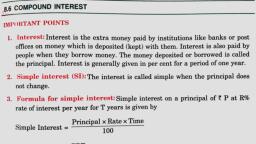Question 1 :
One mole of ${O}_{2}$ gas having a volume equal to 22.4 liters at $0^oC$ and 1 atmospheric pressure is compressed isothermally so that its volume reduces to 11.2 liters. The work done in this process is then<br>
Question 2 :
State whether true or false :<br>During the change of state, the temperature does not change.
Question 4 :
<span class="wysiwyg-font-size-small"><span class="wysiwyg-font-size-small"></span></span><p class="wysiwyg-text-align-left">Which of the following statement is true about 1st law of Thermodynamics?</p>
Question 5 :
The first law of thermodynamics is derived from which of the following law ? <br/>
Question 6 :
When heat energy is given out by a hot substance then the kinetic energy of its molecules _________. Fill in the blank. <br/>
Question 7 :
A gas obeying the equation of state $PV = RT$ undergoes a hypothetical reversible process described by the equation, $PV^{5/3}exp \left (-\dfrac {PV}{E_{0}}\right ) = C_{1}$ where $C_{1}$ and $E_{0}$ are dimensioned constants. Then, for this process, the thermal compressibility at high temperature.
Question 9 :
State whether given statement is True or False<br/>Heat brings about a change in the state of matter.
Question 10 :
When heat is added to a system, which of the following is not possible? <br/>
Question 11 :
Which of the following is a restatement of first law of thermodynamics:
Question 14 :
A thermos bottle containing coffee is vigorously shaken. If the coffee is considered as a system, then the temperature of the coffee will ____________.
Question 19 :
In a given process, $$15 J$ of heat is added to an ideal gas and the gas does $7 J$ of work. Which of the following is true about the internal energy of the gas during this process?<br/>
Question 20 :
At equilibrium temperature, the rate of flow of heat energy from one body to the other and back is the same. Is the statement True or False
Question 22 :
Which of the following is true when a gas moves freely from one part to another part of rigid system?
Question 24 :
Railway tracks have gaps between them to deal with expansion in :
Question 25 :
Select from below, how are temperature and kinetic energy of molecules related to each other?<br/>
Question 28 :
A thermodynamical system is changed from state $(P_1, V_1)$ to $(P_2, V_2)$ by two different processes, the quantity which will remain same will be
Question 29 :
State whether true or false :<br>Heat is a form of energy which produces feeling of hotness.
Question 32 :
Assertion (A) : According to the principle of conservation of energy all heat can be converted<br/>into mechanical work<br/>Reason (R) : Due to various losses, it is impossible to convert all heat into mechanical work.<br/>
Question 33 :
<span class="wysiwyg-font-size-small"><span class="wysiwyg-font-size-small"></span></span><p class="wysiwyg-text-align-left">The Product of pressure and volume has the same units as </p>
Question 34 :
Which physical quantity determines the direction of flow of heat energy?<br/>
Question 35 :
<b></b>A body was supplied with $4\times 10^6$ mega joules. Express this heat is joules.
Question 37 :
In a certain process $500\ cal$ of heat is given to a system and the system does $100\ J$ of work. The increase in internal energy of the system is
Question 39 :
Air is expanded from $50$ liter to $150$ liter at $2$ atmospheric pressure ( $1$ atm = pressure =$10^{5} Pa$). The external work done is:
Question 41 :
If a system undergoes contraction of volume then the work done by the system will be
Question 43 :
An ideal gas expands from volume $ V_1 $ to $ V_2$. This may be achieved by either of three processes: isobaric, isothermal and adiabatic. Let $ \Delta U $ be the change in internal energy of the gas , Q be the quantity of heat added to the system and W be the work done by the system on the gas. Identify which of the following statements is false for $ \Delta U$?<span id="_wysihtml5-undo" class="_wysihtml5-temp"></span>
Question 44 :
Assertion: The work done on an ideal gas in changing its volume from $V_1 \space to \space V_2$ under a polytropic process is given by the integral $\int_{v_1}^{v_2} P. dV$ taken along the process.
Reason: No work is done under an isochoric process of the gas.
Question 45 :
Heat of $20\ Kcal$ is supplied to the system and $8400\ J$ of external work is done on the system so that its volume decreases at constant pressure. The change in internal energy is ($J=4200\ J/kcal$)
Question 46 :
A container is filled with 20 moles of an ideal diatomic gas at absolute temperature T. When heat is supplied to gas temperature remains constant but 8 moles dissociate into atoms. Heat energy given to gas is
Question 47 :
In a cyclic process, the change in the internal energy of a system over one complete cycle
Question 49 :
Internal energy of $ n_{1} $ mol of hydrogen of temperature $ T $ is equal to the internal energy of $ n_{2} $ mol of helium at temperature $ 2 T . $ The ratio $\dfrac{ n_{1} }{ n_{2}} $ is
Question 50 :
Assertion: An ideal gas is enclosed within a container fitted with a piston. When volume of this enclosed gas is increased at constant temperature, the pressure exerted by the gas on the piston decreases.
Reason: In the above situation the arte of molecules striking the piston decreases. If the rate at which molecules of a gas having same average speed striking a given area of the wall decreases, the pressure exerted by gas on the wall decreases.
Question 51 :
An iron block of mass $2\;kg$, falls from a height of $10m$. After colliding with the ground it loses $25\%$ energy to surroundings and rest is gained as heat. Then find the temperature rise of the block. (Take sp. heat of iron $470\;J/kg^{\circ}C$)<br/>
Question 53 :
Find the external work done by the system inkcal, when 20 keal of heat is supplied to thesystem and the increase in the internal energy is 8400$\mathrm { J } ( \mathrm { J } = 4200 \mathrm { J } / \mathrm { kcal } ) ?$
Question 54 :
Two cylinders $A$ and $B$ fitted with pistons contain equal amounts of an ideal diatomic gas at $300\ K$. The piston of $A$ is free to move, while that of $B$ is held fixed. The same amount of heat is given to the gas in each cylinder. If the rise in temperature of the gas in $A$ is $30\ K$, then the rise in temperature of the gas in $B$ is<br>
Question 55 :
In a thermodynamic process pressure of a fixed mass of a gas is changed in such a manner that the gas releases $20J$ of heat and $8J$ of work is done on the gas. If initial internal energy of the gas was $30J$, what will be the fixed internal energy?





















































